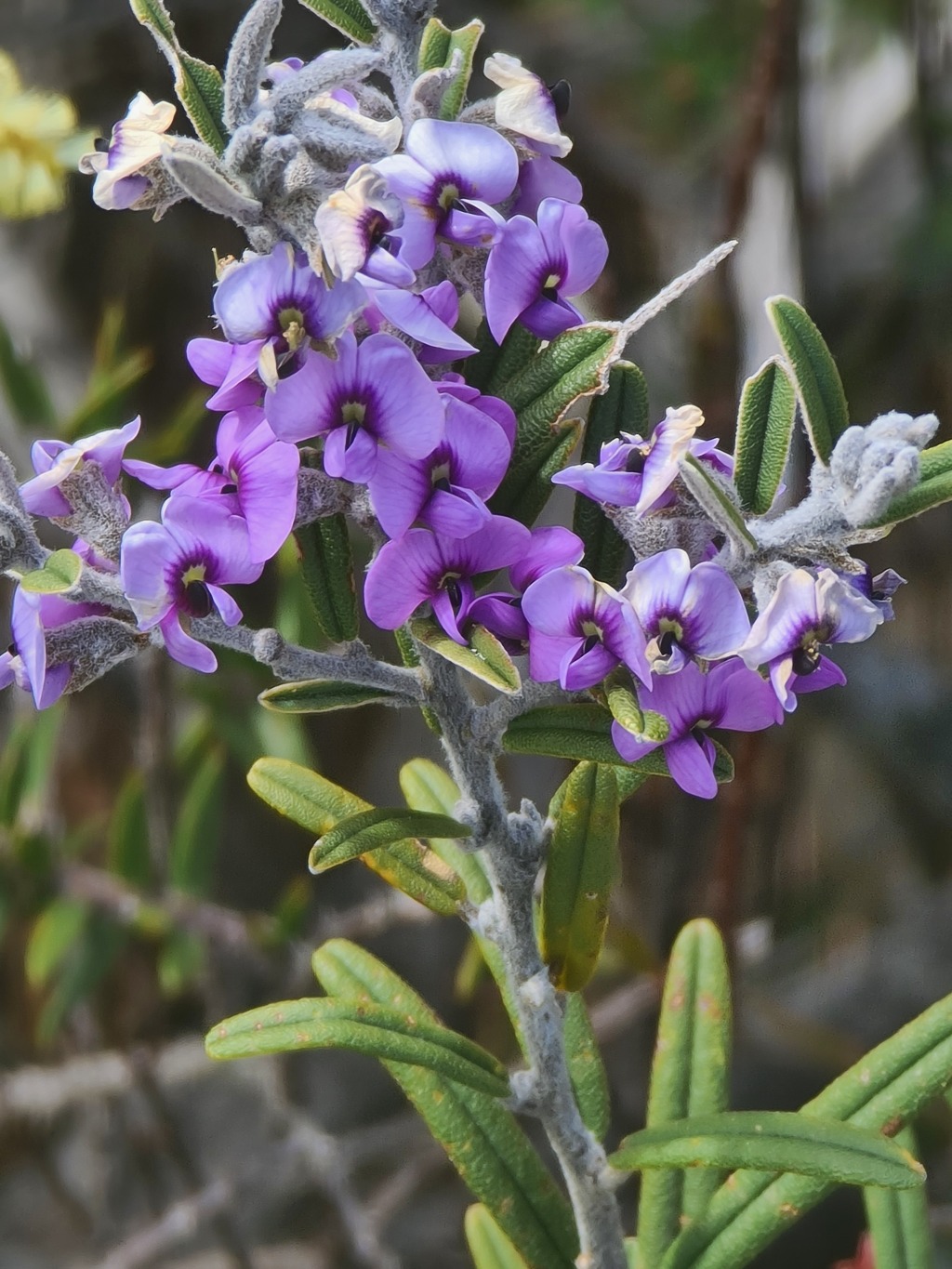Hovea rosmarinifolia
A.Cunn.Shrub to 1.5 m high; branchlets pubescent with curled to crumpled, somewhat appressed, brown or rusty hairs. Leaves linear to narrow-linear, 1–3(–4) cm long, 1.2–4 mm wide; apex truncate or rounded, mucronate; upper surface strongly arched up either side of depressed midrib, glabrous or with scattered hair, scabrid, venation strongly raised; lower surface with dense curled to crumpled, tan hairs that completely obscure the lamina; margins revolute, often completely concealing the lower surface; stipules narrow-ovate, 0.5–1.2 mm long, usually densely hairy. Inflorescence sessile, 1- or 2-flowered; pedicle 0.5–1.5(–2) mm long; bract inserted up to 1.5 mm below bracteoles, ovate to narrow-ovate, 0.8–1.5(–2) mm long; bracteoles narrow-ovate to lanceolate, 1–1.5 mm long; calyx 3–4 mm long; corolla mauve; standard 5–7 mm long (including claw), c. as wide as long; keels shorter than wings; stamen-filaments to c. 4 mm long. Pod sessile, with moderate to dense cover of rusty indumentum. Flowers Aug.–Sep.
GGr, VAlp. In Victoria apparently confined to Mount Difficult in the Grampians, growing in dry rocky woodland.
Closely resembles H. asperifolia, but distinguished from that species by the more strongly raised venation on the upper leaf surface and absence of simple hairs that are longer than the underlying dense appressed hair on the lower surface, and smaller flowers, bracts and bracteoles.
 Spinning
Spinning

